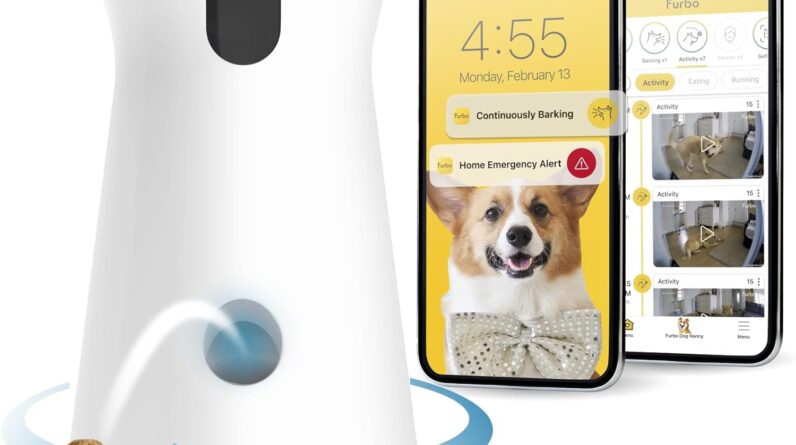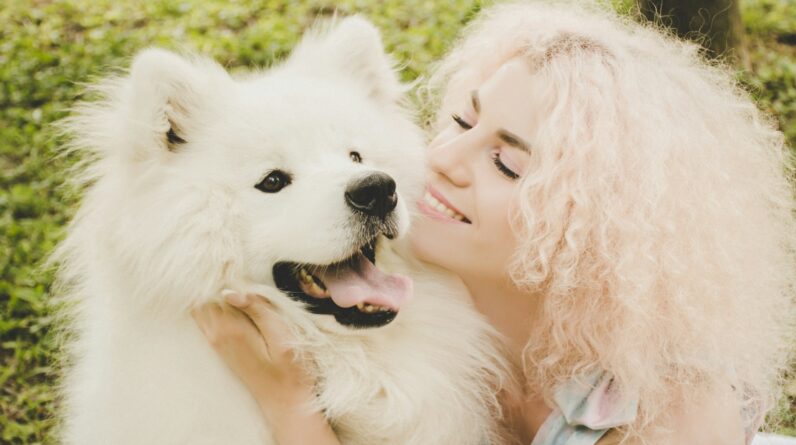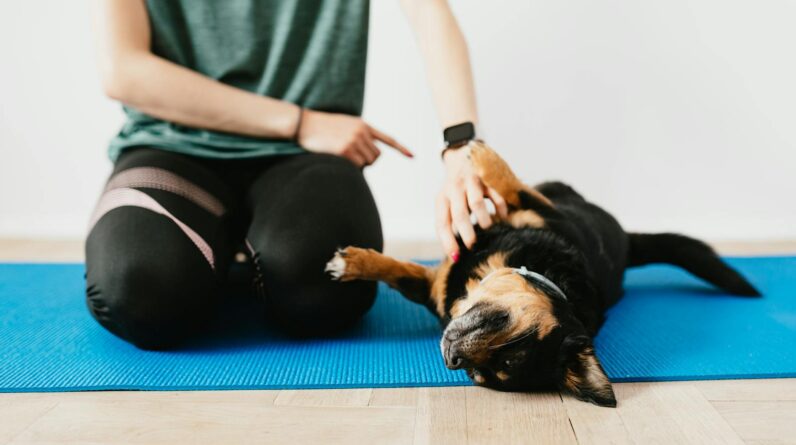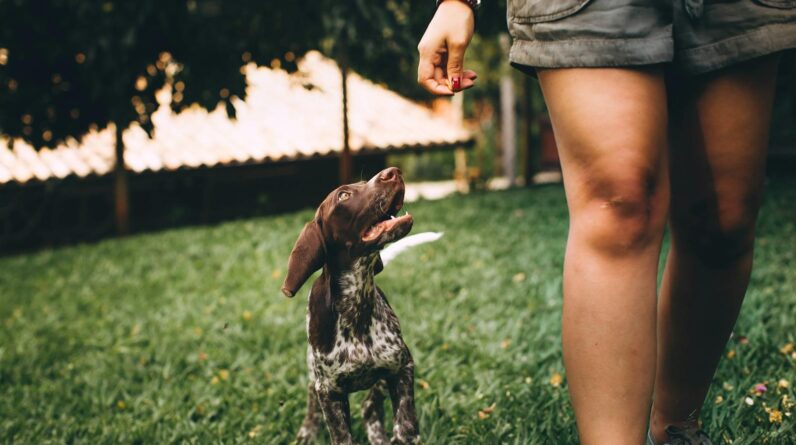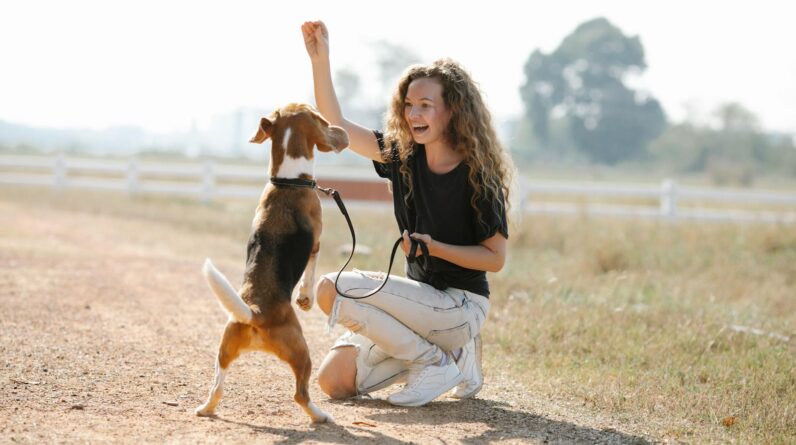
What to Do When Your Dog Misses You Too Much
Hey there, dog owners! Have you ever noticed how your furry friend gets all sad and upset when you leave the house? That’s called separation anxiety. It’s when your dog feels really scared and lonely without you. But don’t worry! There are some cool tricks you can try to make your dog feel better when you’re not around.
Practice Leaving and Coming Back
Did you know that you can play a game with your dog to help with their anxiety? Start by going out for just a few seconds and then come right back. Keep doing this, and each time stay away a little bit longer. This way, your dog will learn that it’s totally okay when you leave because you always come back.
Create a Special Space
Dogs love having their own cozy spot. Find a place in your house where your dog can chill out, like a corner with a comfy bed or a crate with their favorite blanket. When they’re in that spot, they can feel safe and snug, which helps a lot when they start missing you.
Leave Behind Fun Things to Do
Imagine if you had no games to play or books to read and you had to stay in your room. Pretty boring, right? Well, dogs feel the same way. Before you leave, give your dog some cool toys or a treat puzzle to work on. They’ll get so busy playing that they won’t have much time to feel sad.
Stay Calm and Cool
Here’s a secret: dogs can totally tell how you’re feeling. If you get all sad or worried when you leave, your dog will too. So when it’s time to say bye, just be chill about it. Give your dog a pat and walk out the door like it’s no big deal.
Make Goodbyes and Hellos Low-Key
It’s super important not to make a huge fuss when you leave or come home. No big hugs or loud voices. Keep things quiet and simple. This tells your dog that coming and going is just a normal part of the day and nothing to get worked up about.
Get Your Dog Tired
You know how you feel super sleepy after running around outside and playing all day? Dogs get like that too! Give your dog a good walk or playtime before you leave. A tired dog is usually a calm dog, and they might just take a nice nap while you’re gone.
Try Doggy Daycare or a Dog Walker
Sometimes, despite all your efforts, your dog might still get really anxious. If that happens, you might want to try doggy daycare or have someone come to walk your dog. It’s a chance for your dog to make friends and have fun instead of being alone all day.
Teach ‘Em Some Skills
Teaching your dog new tricks isn’t just for showing off. It’s a great way to keep their brain busy. The more your dog learns, the better they get at dealing with being alone. They’ll feel so proud of themselves, and they’ll have something to think about other than missing you.
Keep a Regular Schedule
Dogs love knowing what to expect. It makes them feel safe. Try to do the same things at the same time every day, like walking, eating, and playtime. When your dog knows what’s coming up next, they can relax a bit more when you’re not there.
Be Patient and Kind
Last but not least, remember that teaching your dog to be cool with being alone doesn’t happen overnight. It’s going to take some time. So be patient and keep being kind to your dog. They’re trying their best just like you are. And hey, the more you work on it together, the better things will get.
When it comes down to it, helping your dog with separation anxiety is all about making them feel safe and happy even when you’re not around. Try these tips, and you’ll see how your dog starts feeling more relaxed. Just give it time, keep things fun, and enjoy the journey with your four-legged friend. Remember, they love you a whole bunch, and that’s why they can’t wait for you to come back home!
What are the signs of separation anxiety in dogs?
Dogs with separation anxiety may bark, howl, or whine when you leave. They can also have accidents indoors, even if they’re house-trained. Look for destructive behavior, like chewing or digging, specifically near doors or windows. Restlessness or pacing is another red flag.
Some dogs express their stress more subtly by drooling, panting, or showing a lack of appetite. Not all alone-time trouble is separation anxiety, though. Make sure these behaviors aren’t just occasional boredom or one-time incidents.
How can I prevent my puppy from developing separation anxiety?
Early on, teach your pup that being alone is okay. Start with short separations then gradually increase the time apart. Introduce a special toy that only comes out when you’re away. This builds a positive association with alone time.
It’s also important to mix up your departure cues. Grabbing your keys or putting on your coat can trigger anxiety if it always means you’re leaving. So, sometimes do these things and stay put. Keep those goodbyes low-key to reduce the drama.
What are some quick tips to ease my dog’s separation anxiety?
Exercise your dog before you leave; a tired dog is often a calm dog. Create a safe space for them, like a room with their bed and toys. Leave the radio or TV on for background noise. Also, consider leaving an item with your scent for comfort.
Remember, it’s all about routine and distraction. If you can, come back during the day for a quick pat or walk. Keep departures and arrivals stress-free and casual, so they aren’t big deals. And patience—it takes time.
Is it ok to use a crate for a dog with separation anxiety?
Crates can be a cozy den for some dogs, but for separation anxiety, they might feel trapped. It can work if your dog already loves their crate, but don’t force it. If the crate becomes a scary place, it only makes anxiety worse.
Start with the crate door open, and let your dog choose to go in and out. Treats and toys can make it a happy place. Never use the crate as punishment. If your dog seems stressed in it, though, consider other options.
Should I get another pet to keep my dog company?
Another pet might help, but it’s a big maybe. Dogs are social, so a buddy can mean less loneliness. Yet, it’s a roll of the dice. Your dog might thrive, or it might add more stress. Plus, the new pet could pick up on the same anxiety.
Always meet the potential new pet before deciding. Some shelters allow for trial periods to see how animals get along. It’s a commitment, not just a quick fix. Make sure it’s good for the whole family, furry members included.
Key Takeaways
- Recognize the signs of dog separation anxiety, which can include destructive behavior, incessant barking, and accidents indoors when you’re away.
- Create a safe, comforting space for your dog, such as a designated area with their favorite toys and blanket to give them a sense of security.
- Practice departure cues without leaving to desensitize your dog to the triggers that indicate you’re going out and reduce their anxiety.
- Gradually increase the time spent away from your dog, starting with short departures, to help them get accustomed to being alone.
- Consider providing interactive toys or puzzles to keep your dog’s mind engaged and distract them from your absence.
- Exercise your dog before you leave the house to tire them out, making them more likely to rest while you’re gone.
- Avoid making a fuss when leaving or coming home, as this can reinforce your dog’s stress and make them more anxious.
- If the anxiety is severe, seek the help of a professional dog trainer or behaviorist who can provide targeted strategies and support.
- Explore the option of doggy daycare or having a friend check in on your dog if long periods of isolation are unavoidable.
- Be patient and consistent with your approach, as overcoming separation anxiety takes time and dedication.
Final Thoughts
So, we’ve been through the wringer with our furry friends, huh? Turns out, easing your dog’s separation anxiety is doable. It’s all about building confidence with baby steps. Start with short departures, praise calm behavior, and give them a special treat to associate your exit with good vibes.
Routine is your best bud here. Stick to a daily schedule like glue, so your pup knows what’s up. And exercise? Absolutely. Tire them out with a walk or play session before you leave—it’s a game-changer. They nap; you slip out. Win-win.
Remember, if your dog acts like the sky’s falling every time you leave, might be time to call in the pros. Don’t wing it. Vets or trainers have the magic touch for serious cases. Love, patience, and a bit of know-how, and you’ll both be chilling in no time. Keep it cool, folks.


